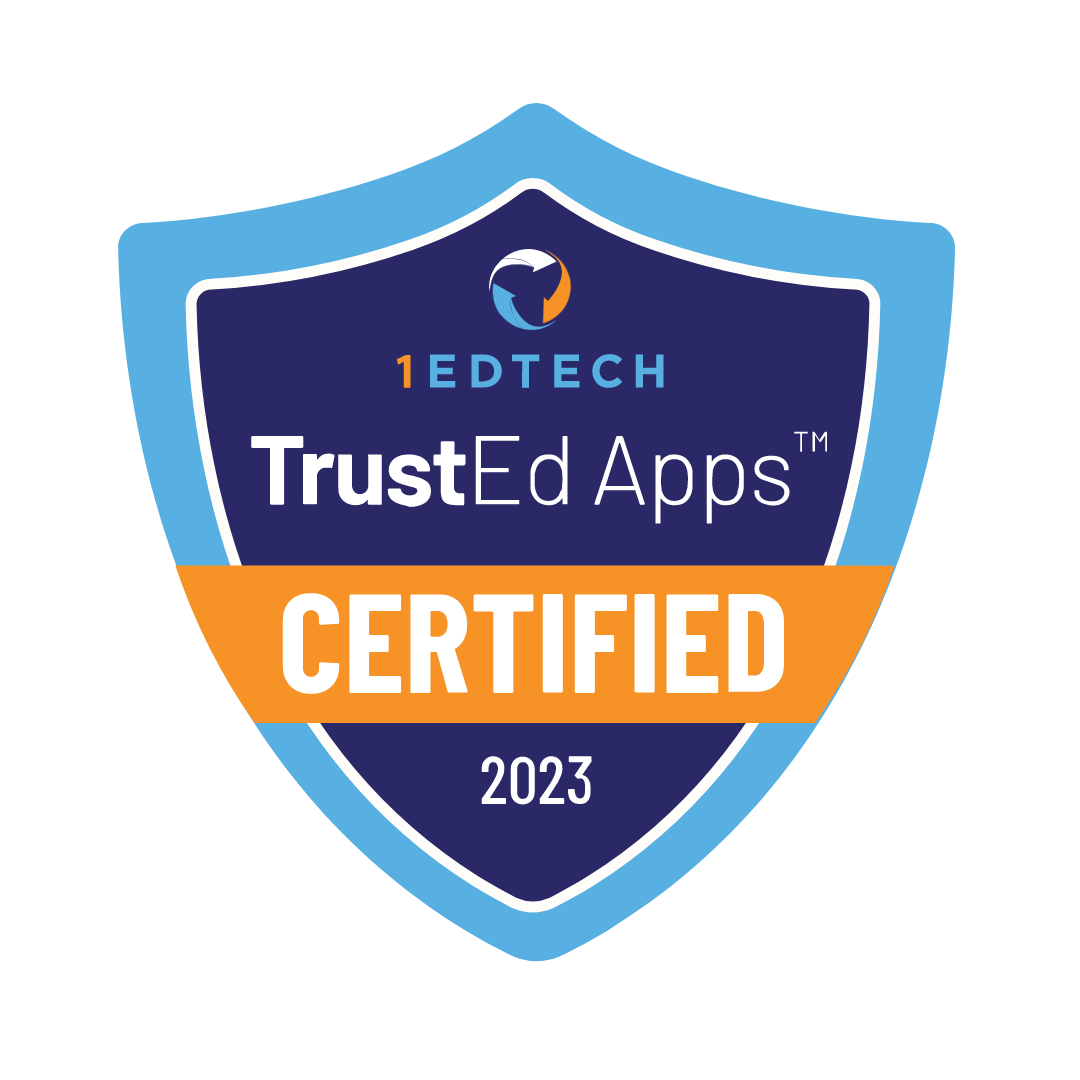Contents
When you’re striving to do in AP Computer Science the pressure of coding and studying for hours, on end can be overwhelming. It gets even tougher when you’re balancing AP classes and trying to find study materials. This guide understands those challenges well drawing from research, expert advice and success stories of students to serve as your companion through this rigorous course.
Whether you’re tackling algorithms or honing your skills in object oriented programming using Java this guide provides all the information to make your study efforts more efficient. Every recommended resource here is carefully selected to align with the curriculum. As you delve deeper into the content you’ll discover that taking courses not only reduces stress but also brings clarity and focus to your preparation journey.
The AP Computer Science course introduces students to computer science concepts, like Java programming, algorithm creation, code testing and documentation. Students also develop an understanding of object oriented programming principles and computational problem solving techniques.
Overview of AP Computer Science

The AP Computer Science class offers students a grounding, in programming with the Java language. It’s not about coding; it’s about grasping the ins and outs of software design and implementation. When you dive into “object oriented programming ” you’re really exploring how intricate programs are constructed by breaking them down into manageable parts known as objects.
It’s akin to building with Lego bricks. Assembling these code blocks and then linking them together to create something larger and more intricate. The course doesn’t just teach coding. Nurtures creative problem solving skills using various “design strategies.” These strategies are like tools in a toolbox—each suited for tasks.
The widespread. Significance of this course in schools nationwide speak volumes with around 65,000 students taking the AP Computer Science exam in 2023.
Picture creating a library where you must store details about books, their authors and the readers who borrow them. This is where “data structures” come into play—the methods we employ to organize and store information efficiently. Algorithms are akin, to recipes that guide your computer on how to handle and manipulate this data.
For instance, let’s say you have a list of students’ names in alphabetical order and you need to find a specific name quickly. How would you do it? You’d use an algorithm—a step-by-step procedure for performing a task—to efficiently search through the list and find the name you’re looking for.
In summary, AP Computer Science exposes students to fundamental concepts that form the backbone of the technology they use every day. It offers insights into coding principles, problem-solving strategies, and innovative methods of processing data, providing a strong launchpad for future programmers and problem solvers.
The foundational knowledge acquired in AP Computer Science acts as a springboard for students as they dive deeper into the intricacies of computer science. Next up, we’ll immerse ourselves in the core concepts and principles that drive this captivating field forward.
Core Concepts and Principles

So, you’ve decided to embark on the journey of exploring the world of computer science with the AP course. Let’s unravel some of its fundamental concepts and principles to get you started on the right path.
Variables and Data Types
Variables are, like containers that store types of information such as numbers, letters or any data you need for your program. It’s similar to understanding the ingredients needed before cooking a meal. In the realm of computer science there are data types like integers ( numbers) floats (numbers with decimal points) characters (letters) and booleans (true or false). Having a grasp of these and utilizing them effectively is crucial, for crafting bug code.
Control Structures
Just like in everyday life decisions, programs also make decisions based on particular conditions. This is where control structures come in. Conditional statements like “if” and “else” help guide the program’s decision-making process by executing certain code blocks when specific conditions are met. Similarly, loops such as “for” and “while” help in repeating tasks efficiently. And let’s not forget logical operators that allow us to perform operations within these control structures! It’s akin to orchestrating a well-rehearsed play, guiding each part of your program through its paces with precision.
Method Calls and Recursion
Now lets delve into the art of programming. Using method calls allows us to organize our code efficiently by breaking it down into manageable parts known as methods or functions. Each method can be invoked when necessary enhancing the readability and maintainability of your code. Recursion, on the hand is a concept where a function calls itself to solve problems that can be deconstructed into smaller versions of the same problem. It’s akin to solving a puzzle by employing scaled down versions of the puzzle!
Grasping these principles is crucial for anyone aspiring to be a computer scientist. Variables and data types establish the foundation, for handling information control structures govern decisions and loops in programs while method calls and recursion dictate code organization and problem solving strategies. It’s a journey that involves mastering these tools as we venture deeper into the realm of AP Computer Science.
In-Depth Java Programming

Java, a powerful programming language, is the backbone of your journey in the AP Computer Science course. It’s where the magic begins!
Java Basics:
Syntax and Semantics: When starting with Java, syntax and semantics are vital. Syntax refers to the structure and rules of writing in Java, while semantics focus on the meaning behind those structures. Paying close attention to these aspects ensures that your code is written correctly and functions as intended. By understanding appropriate syntax, error checking, and debugging strategies, you lay a strong foundation for more complex programming tasks.
Object-Oriented Programming (OOP): This concept is at the heart of Java programming. It involves organizing your code into objects that interact with one another. Object-oriented programming emphasizes the use of classes, objects, inheritance, and polymorphism. Understanding encapsulation, which restricts direct access to certain components of an object, and abstraction, which hides complexity and shows only relevant information, are key tenets of OOP.
To better understand these ideas consider embarking on a project, like setting up a banking system. This hands on activity allows students to apply object oriented programming principles by defining classes for accounts implementing methods for deposit and withdrawal functions and utilizing inheritance to manage account types such as savings or checking accounts.
Learning Java goes beyond grasping code; it involves tackling challenges with a touch of creativity. The allure of Java lies in its knack for turning thinking into solutions whether its devising an algorithm or crafting a user friendly interface.
Picture this; you’re developing a simulation game. Each pet type would have its class detailing behaviors like eating, sleeping or playing based on user interactions. This approach not teaches about classes. Objects conceptually but also puts them to work through interactive program creation.
By mastering the basics of Java you establish a base, for programming ventures while honing problem solving skills that transcend coding itself. An asset valued across various fields.
Armed with these Java principles lets delve into their application, in real life situations by working on hands on projects and applications as part of the AP Computer Science program.
Mastering Algorithms and Data Structures

In the world of computer science, algorithms and data structures are like the building blocks of a skyscraper—they are vital for constructing efficient and effective software solutions. Imagine you have a huge jigsaw puzzle with thousands of pieces—algorithms and data structures are what give you the blueprint to assemble the pieces in the right order.
The Power of Sorting Algorithms
Let’s first zoom in on sorting algorithms. They’re like magic tricks for organizing large amounts of data. One of the most basic, yet commonly used, sorting algorithms is bubble sort, where each pair of adjacent elements is compared and the elements are swapped if they are in the wrong order. It might not be the fastest, but it does the job!
Merge sort is another notable player in this field. It divides an unsorted list into smaller ones, sorts those smaller lists, and then merges them back together. This “divide and conquer” strategy ensures faster sorting whereas quick sort cleverly picks a “pivot” element and partitions the array around the pivot.
Search algorithms are equally pivotal. They help you find specific information quickly from an array of data. Linear search methodically checks every single item until it finds the desired one, while binary search smartly halves the search range after each comparison.
Embracing Data Structures
When it comes to managing and organizing your information having a grasp of data structures is essential. Arrays help you group together items of the kind enabling easy access, to any item based on its position. In contrast ArrayLists adjust their size as needed and 2D arrays are useful for representing grids or matrices
Having an understanding of these concepts equips you for real world problem solving scenarios where you might need to write code to sort a list of students by their exam scores or create a search function to efficiently locate specific data in a database.
Mastering algorithms and data structures enables you to develop solutions that can handle volumes of information effectively—a valuable skill for professionals, in the field of computer science.
Practice Exams and Prep Tips

Getting ready, for the AP Computer Science exam involves more than learning and understanding concepts; it also requires practicing your skills. Consistent practice with exam questions and practice tests is essential to master the material and format of the test.
Accessing papers and sample questions from the College Board is one of the best ways to practice for exams. This gives you a look at the types of questions that could show up on the test helping you familiarize yourself with how the questions are structured.
Online simulations that offer timed practice exams can also be a resource. These simulations allow you to practice completing sections under timed conditions preparing you for managing time during the exam.
Apart from taking full length practice exams honing skills through targeted practice is important. For instance mastering code tracing by predicting outputs can enhance your understanding of algorithms. Boost your problem solving abilities.
Regularly practicing debugging to identify and errors, in code is also crucial.By fixing pieces of code you can enhance your problem solving skills and develop a deep grasp of how programs work.
Imagine it like this: Just like an athlete trains specific muscles or skills to excel in their sport, practicing code tracing and debugging helps you become proficient in recognizing patterns, uncovering errors, and refining your programming abilities.
Remember, each practice session brings new insights and reinforces your understanding of different programming concepts. It’s not just about testing your knowledge but also about building confidence in your ability to tackle challenging problems efficiently.
So when preparing for the AP Computer Science exam, remember that consistent practice with past exam questions combined with focused skill-building efforts will give you a solid foundation to excel on test day.
As you navigate the intricate world of computer science examinations, let’s now shift our focus towards unleashing your creativity with real-world applications and projects in AP Computer Science.
Projects and Opportunities in AP Computer Science

As you embark on the journey into the world of AP Computer Science, embracing project-based learning can be a game-changer. It’s not just about studying from textbooks or solving problems on paper; it’s about applying what you’ve learned in a real-world setting.
Consider this: You’re coding away and suddenly realize that your code is running a game! That’s the essence of project-based learning. By developing projects, students can vividly see how the skills they’re learning can be applied in practical applications. This helps solidify their understanding of coding concepts and makes learning more engaging.
Example Projects
One entertaining project idea is developing a game using Java. Through this project, students get to incorporate user input, loops, and graphic display elements, providing a creative way to put programming concepts into practice while having some fun alongs. Another thrilling project opportunity is building an app. This allows them to experience the process of developing an application from start to finish, adding a valuable real-world element to their studies.
Career Pathways
Outside of school AP Computer Science can open up career paths, for high school students who have a grasp of programming.
Internships serve as an opportunity for students to get hands on experience in the technology field. Many tech companies offer internships tailored for schoolers with programming skills giving them valuable exposure to real world coding challenges and environments.
Competitions are another way for students to showcase their skills and learn from others. Local and national coding competitions not present challenges but also provide unique learning opportunities that can help students expand their programming knowledge and confidence.
By embracing project based learning and exploring these career paths students can deepen their understanding of computer science beyond concepts. Gain practical skills that will benefit them in their future endeavors.
Mastering AP Computer Science through project based learning and delving into real world situations not improves problem solving skills. Also sets the stage for potential career prospects in the tech industry. Best of luck, on your journey!





